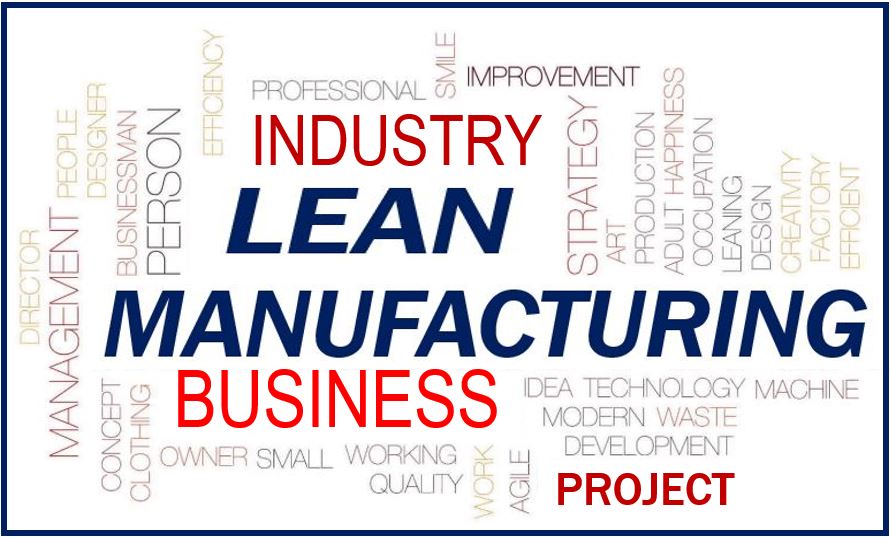 Efficiency is a top priority of many manufacturers, but the task of identifying opportunities for improvement, implementing the changes, and measuring the impact can be daunting. It’s also a challenge to keep the momentum moving when you don’t have a structured approach. Busy teams may also find it challenging to spot process inefficiencies, and may allow bad habits to affect the quality of their work and delivery speed. So how can a manufacturer improve efficiency with all these challenges?
Efficiency is a top priority of many manufacturers, but the task of identifying opportunities for improvement, implementing the changes, and measuring the impact can be daunting. It’s also a challenge to keep the momentum moving when you don’t have a structured approach. Busy teams may also find it challenging to spot process inefficiencies, and may allow bad habits to affect the quality of their work and delivery speed. So how can a manufacturer improve efficiency with all these challenges?
-
Carry out an assessment
The first step in any efficiency process is to take stock of the situation. Like visiting a doctor, you must know what is ailing your organization before you can start any treatment. Senior managers and key employees can help you identify problems that crop up during manufacturers. Key employees will have spotted efficiency opportunities. Rely on accurate financial and operational data during the assessment. Credible data is vital in identifying future efficiency problems and acts as a benchmark when measuring your progress.
Bringing in a lean manufacturing consultant is usually the best way to identify these loopholes. Whether you want to prepare your business for sale, or pursuing profitability, a consultant will identify areas that need a boost by offering additional management support.
-
Check your planning and organization
When starting a new week, the first thing you do is plan how you will manage the week’s tasks and meet your deadlines. It’s no different with your manufacturing processes. Organizing the floor and workflow can significantly increase efficiency. To cut down on search and transport time, for instance, organize workspaces by having designated areas for specific tools and materials. Maintain cleanliness from dirt, dust, and spills. These small changes create a relaxed work environment that stimulates speed and productivity. It improves workers safety and final product quality.
Visual systems such as picture job board will help you identify wait time and reduce them to the minimum. Job boards convey vital information on the client’s needs, the manufacturing process on the floor and their status, and special instructions.
-
Check your manufacturing process and simplify it
Industrial waste is a crucial factor in the sustainability of the manufacturing process. Industrial waste results in defect products, processing, waiting time, transportation, and other negative effects. Implementing lean manufacturing can reduce operation cost, reduce inventory, increase product quality, and reduce overproduction.
Find an appropriate method to simplify your manufacturing tasks. Eliminate downtime by automating your processes and aim for zero waste, whether in time or raw material. Find one aspect where maximum productivity can be achieved and work on the best way to simplify this process.
Lean manufacturing is a continuous process and is both a mindset and a practice as opposed to an event. Your workers must commit to continuous mindset and practice improvement, to spot and reduce possible errors. You can also track whether the changes made have a positive impact on the overall process efficiency.
-
Balance systems and tools
Special tools and frameworks have their place in increasing business valuation, but they are only side of the coin. Management operating systems are the most critical enablers of success. You must commit to a system that caters for teaching, learning, and improving. During everyday work, you are caught up in the action, and you only see part of what is ailing the company. Lean is about taking a step back and asking what is really going on and how it can be made better.
Part of your system is employee training. Cross-training employees puts them at a position to come up with creative solutions that improve efficiency, cost reduction, quality products, and general process improvement. While creating a lean system, give a listening ear to employees with hands-down experience with the process as opposed to relying on the top-down method. Create a positive feedback loop by encouraging ideas and implementing them.
Lean manufacturing is valuable to any company that wants to increase business valuation, considering cost reduction, improving efficiency, or preparing to sell. This concept has helped companies eliminate activities that use resources without adding real value. Companies have also stayed afloat and profitable during the recession by implementing lean strategies.
Benefits such as reducing redundancy, introducing safe and efficient working models, and increasing output take commitment and working systems. A lean manufacturing consultant conducts a lean exercise and suggests ways to reduce milling redundancy. Customer demands and expectations are becoming more sophisticated and demanding, with the pressure trickling down to manufacturers. Lean techniques are the answer.

